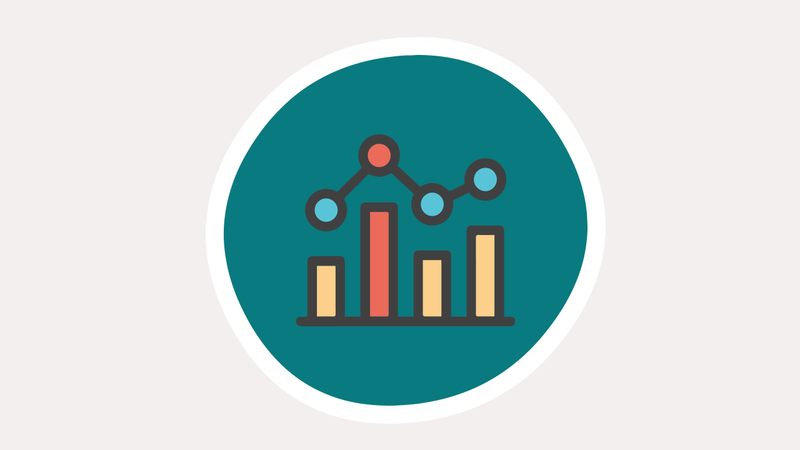Information Technology Professionals
Information technology (IT) professionals play a centralized role in inclusive technology systems. By using best practices for acquiring, administrating, and supporting technology hardware, software, and connectivity, IT professionals ensure the foundational components are available and usable for learners and staff with and without disabilities.
Below are specific ways that IT professionals support an inclusive technology system.
Leadership

IT professionals collaborate with assistive technology (AT) and educational technology (EdTech) professionals to lead a balanced and inclusive technology infrastructure. IT professionals help to:
- Create a community-wide vision by sharing IT administration and security knowledge and experiences to create a shared vision and goals that include an accessible technology infrastructure.
- Develop a strategic technology plan by sharing ideas for how IT staff can support the interoperability of educational and assistive technologies, as well as developing policies and standards for district IT services.
- Measure progress for continuous improvement by soliciting feedback from educators, students, and families to evaluate the effectiveness of IT services and equipment. IT professionals also take actions based on evaluation data to ensure diligent provisioning and accessibility of IT hardware, software, and networks.
- Develop a professional learning system by identifying critical areas, such as data security and privacy, for which all educators, paraprofessionals, and service providers (such as therapists) are provided training and supports.
- Partner and communicate with families by supporting critical family communication infrastructure and identifying family-friendly messaging around essential IT concepts.
Infrastructure

IT professionals contribute to an inclusive technology infrastructure by planning, designing, and managing all software, hardware, and networking installations and support services. IT professionals help to:
- Personalize learning devices by ensuring that standard district software is configurable and meets accessibility needs to support all students, including those with disabilities. Also, when needed, IT professionals partner with educators and families to procure and set up personalized devices to meet the accessibility needs of particular students.
- Unify inclusive technology decision-making by coordinating and soliciting input and feedback from individuals with disabilities, families, AT professionals, and IT professionals in procurement decisions to choose devices and ensure their interoperability.
- Provide accessible educational materials (AEM) by providing technical support for EdTech staff on networks and hardware used to support technology for teaching and learning, as well as providing technical support for AT staff on hardware and networks for accessibility tools to support individual needs and preferences (screen readers, dictation, or video tools).
- Ensure student privacy and secure inclusive practices by maintaining a technology infrastructure to support accurate and secure data exchange between educators, families, and students. IT professionals should also implement and train staff, students, and their families on district privacy policies and safe cybersecurity practices to minimize cyberattacks and data breaches.
- Grant families access by providing them with foundational information on various products and platforms and ensuring, when needed, that families and educators of students with complex learning support needs have appropriate login information.
- Provide technical support to families by establishing opportunities for families to engage with Help Desk staff to troubleshoot barriers.
Teaching

By taking a proactive approach to broadening personal AT and EdTech skills, IT professionals can more effectively support inclusive teaching and learning through technology. IT professionals help to:
- Develop technology competencies by maintaining personal knowledge and training educators in the use of hardware and software to meet technology competencies.
- Design learner-centered experiences by making available to staff, educators, and families knowledge of trends, research, applications, and effective practices related to the use of inclusive technology in education systems.
- Enhance technology skills by participating in EdTech and AT learning opportunities and integrating EdTech and AT knowledge with IT knowledge to develop more inclusive technology practices.
- Engage families in the learning community by supporting learning management systems as a highly functional and effective mechanism for communication.
- Support families’ shifting role by offering opportunities for learners to explore IT career opportunities through internal district experiences as part of transition planning.
Learning

IT professionals support the infrastructure that helps educators use technology as a tool to offer more flexibility and support for learning and student engagement. IT professionals help to:
- Empower learners to actively engage by maintaining hardware, software, and accessible communication networks that help students to express what they know and can do.
- Empower learners to make independent choices about technology by collaborating with students, their families, and educators to use technology resources appropriately in a variety of situations and for a variety of tasks.
- Empower families to support learning by designing opportunities for families to engage learners in accessible IT experiences to simulate postsecondary possibilities.
Assessment

IT professionals provide the technology framework to effectively measure learning, administer accessible assessments, and analyze assessment data to make informed decisions. IT professionals help to:
- Procure accessible assessments by maintaining accessible assessment platforms that are interoperable with assistive technologies.
- Design accessible formative assessments by ensuring the interoperability of accessible formative assessment tools with district-supplied and supported technologies.
- Collaborate with state testing officials by providing technical expertise to district assessment coordinators on technology platforms used for assessment and relaying barriers experienced and reported by families to state assessment technology coordinators.
- Analyze data for decision-making of instructional, programmatic, and strategic design by coordinating various learning platforms and programs to an integrated student information system for streamlined data collection and use on behalf of educators.